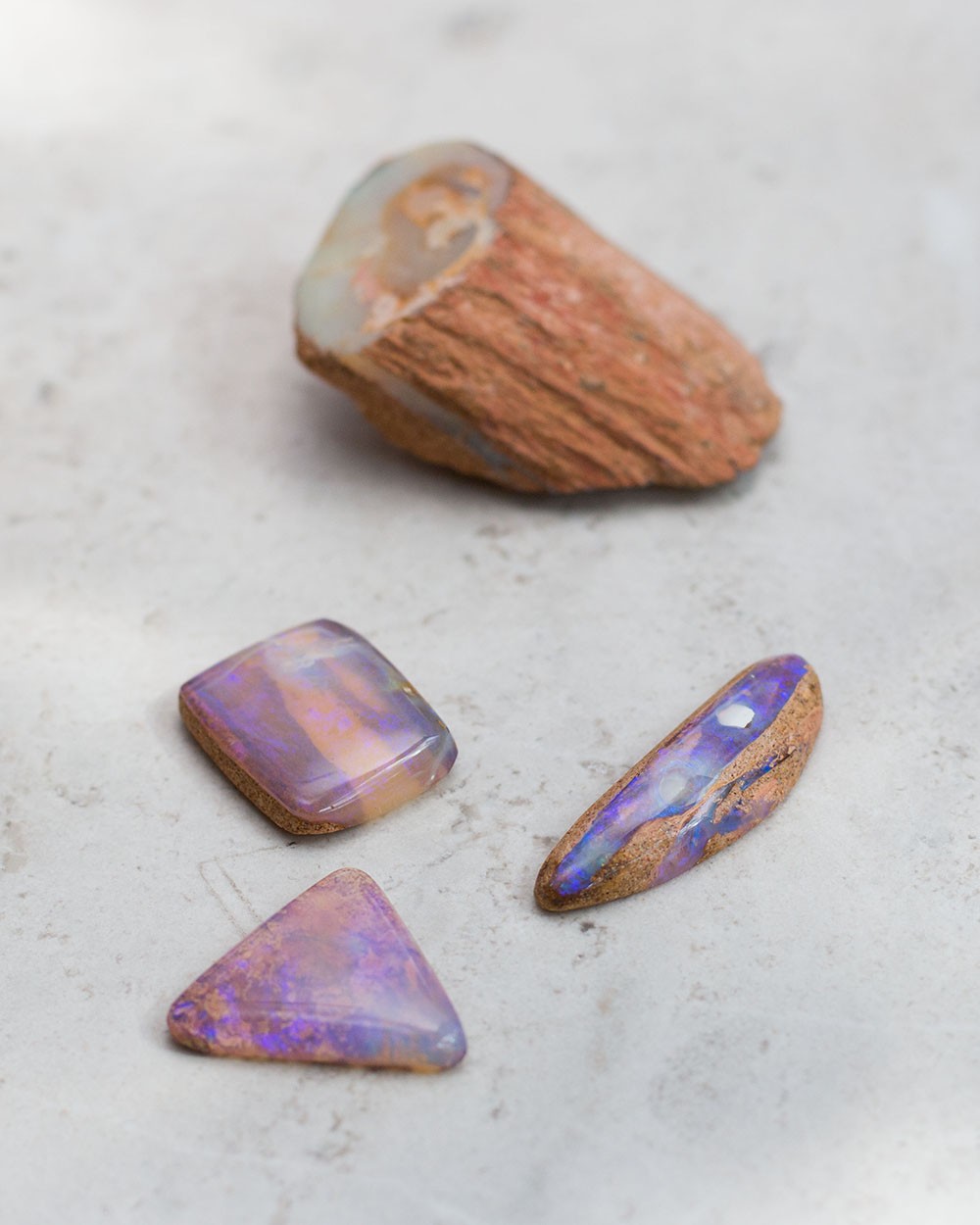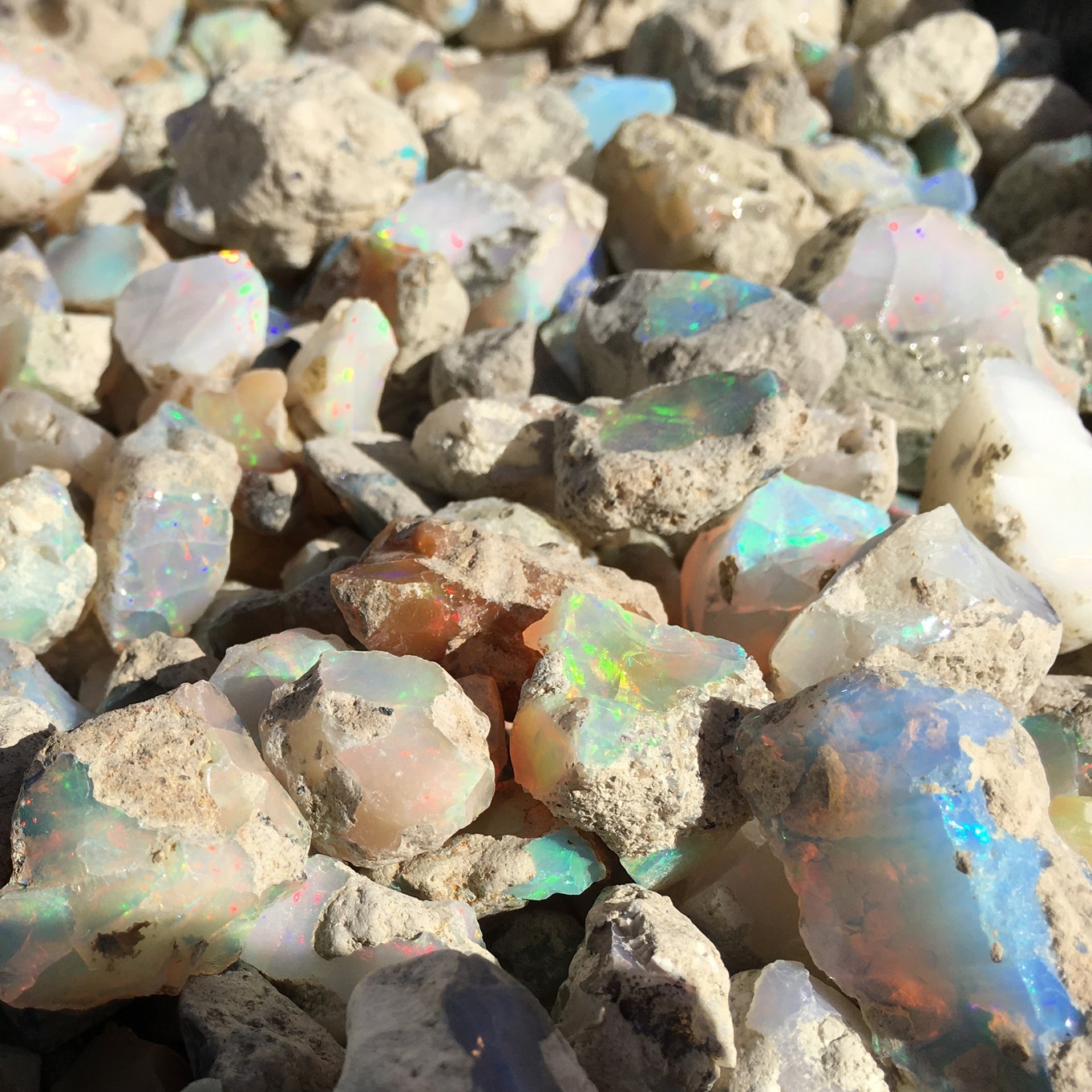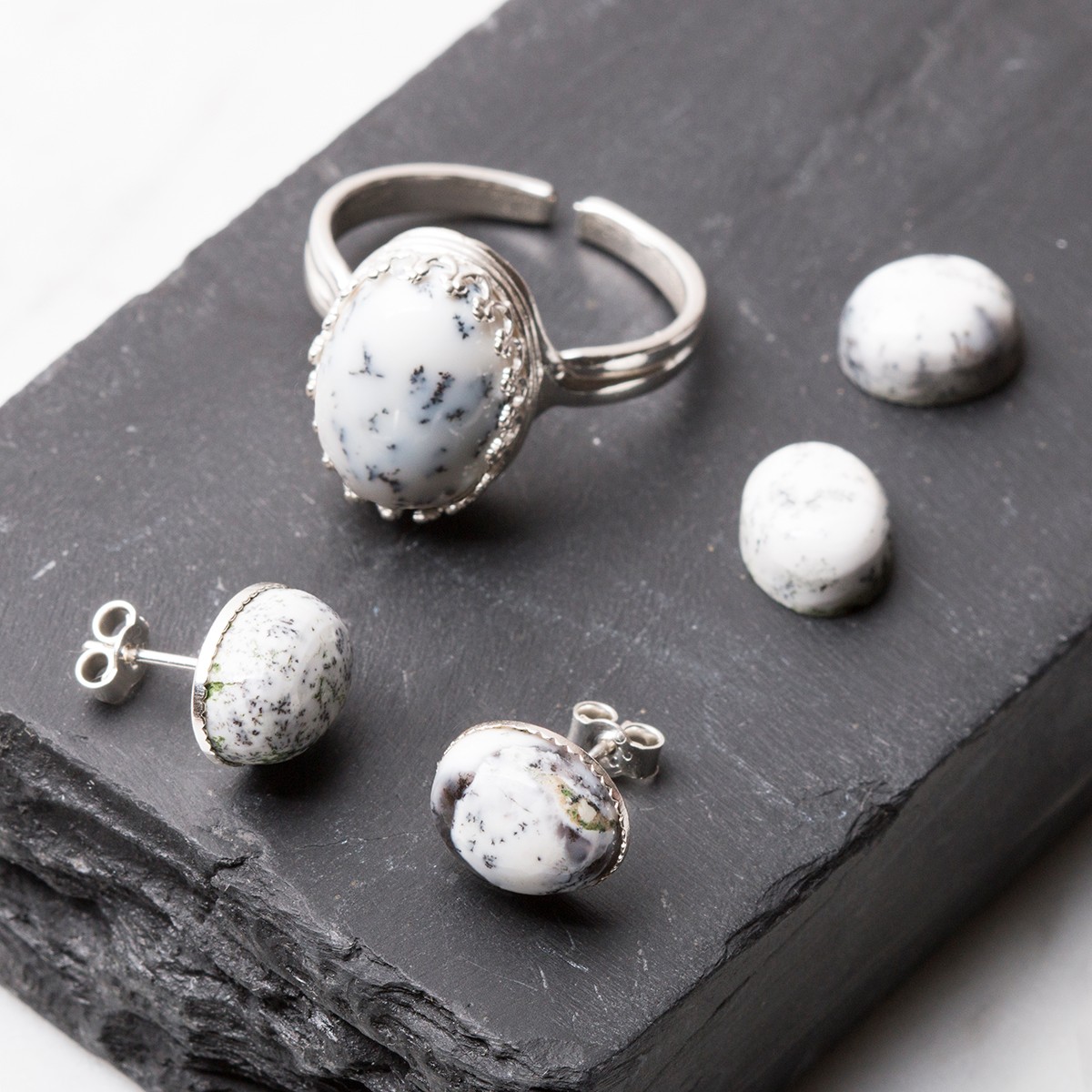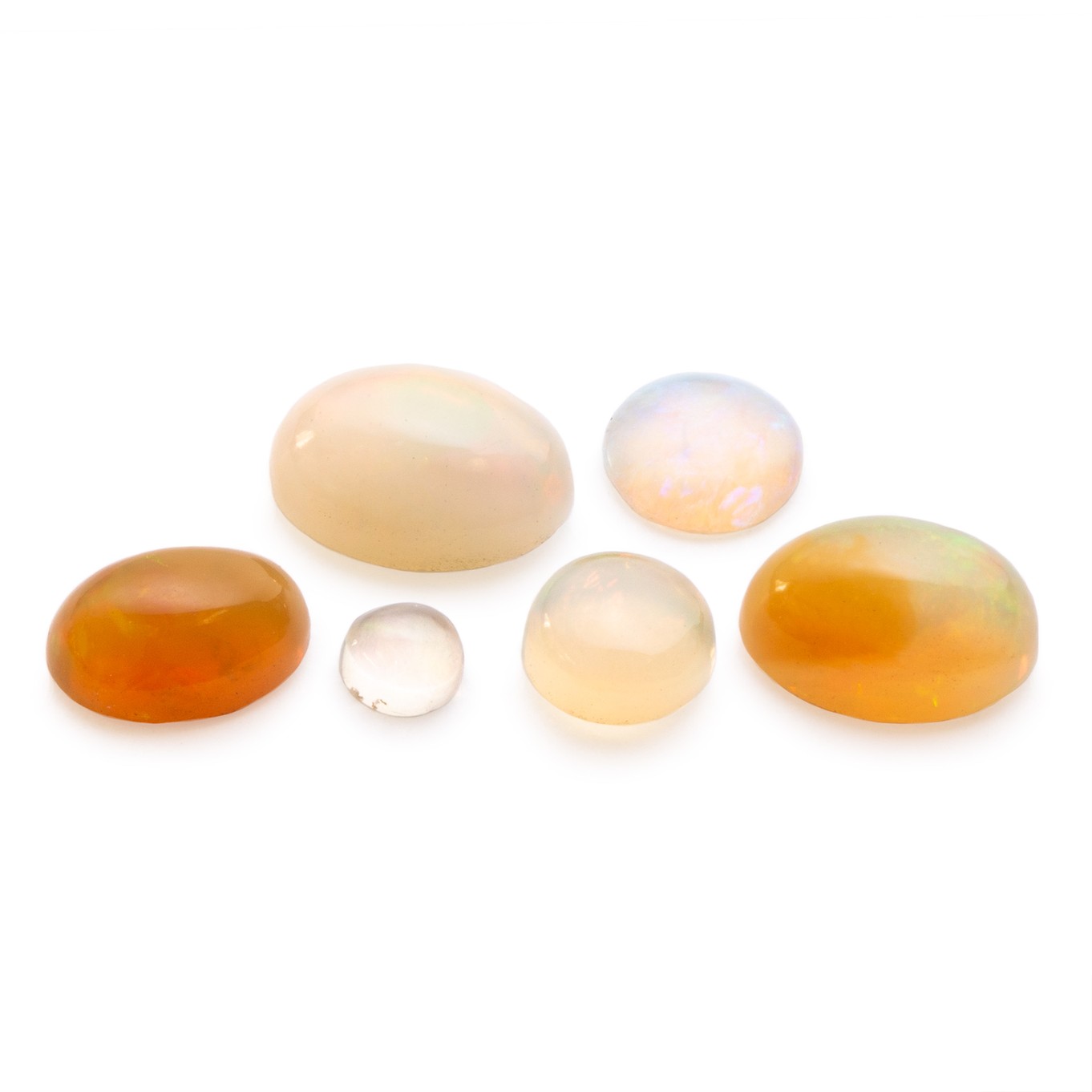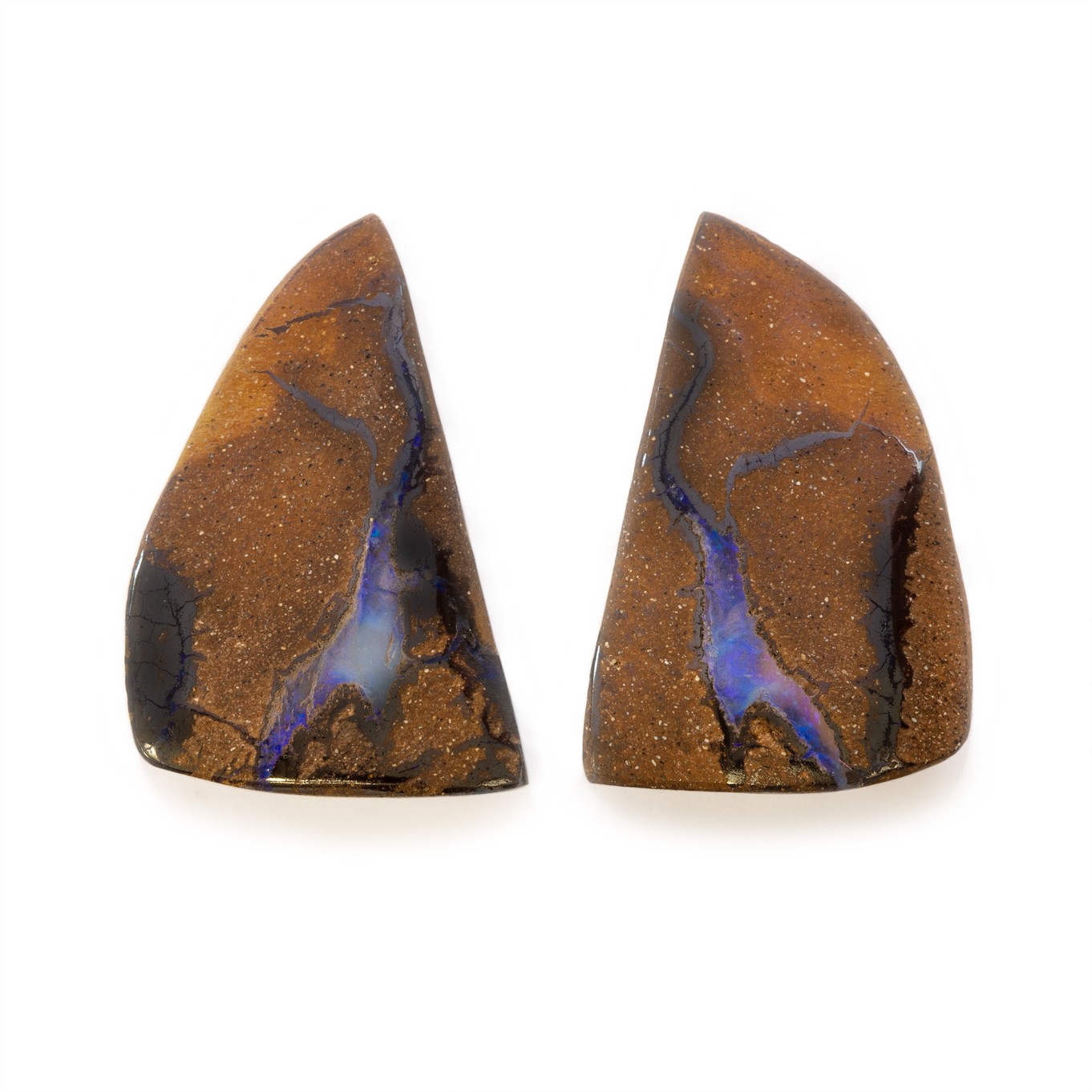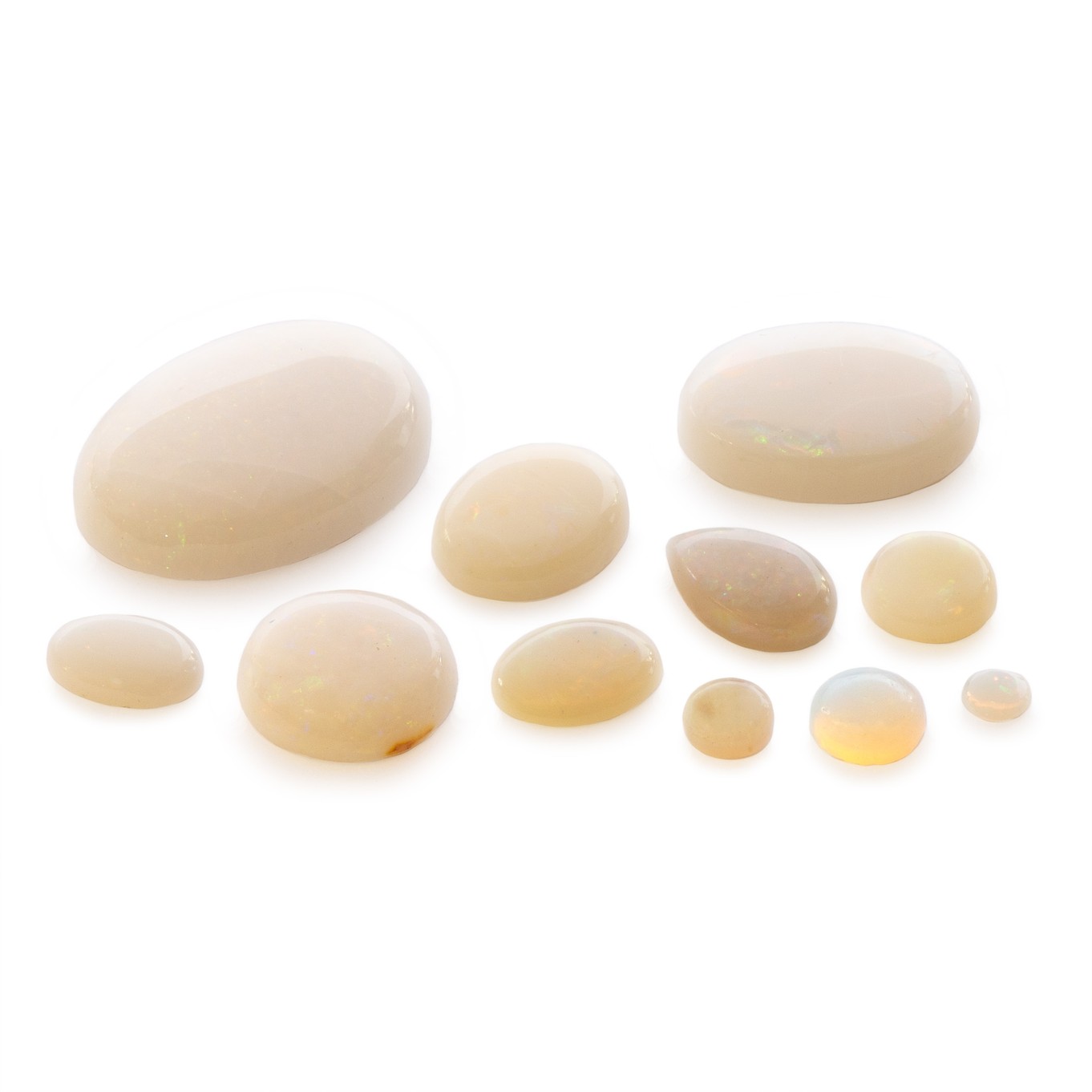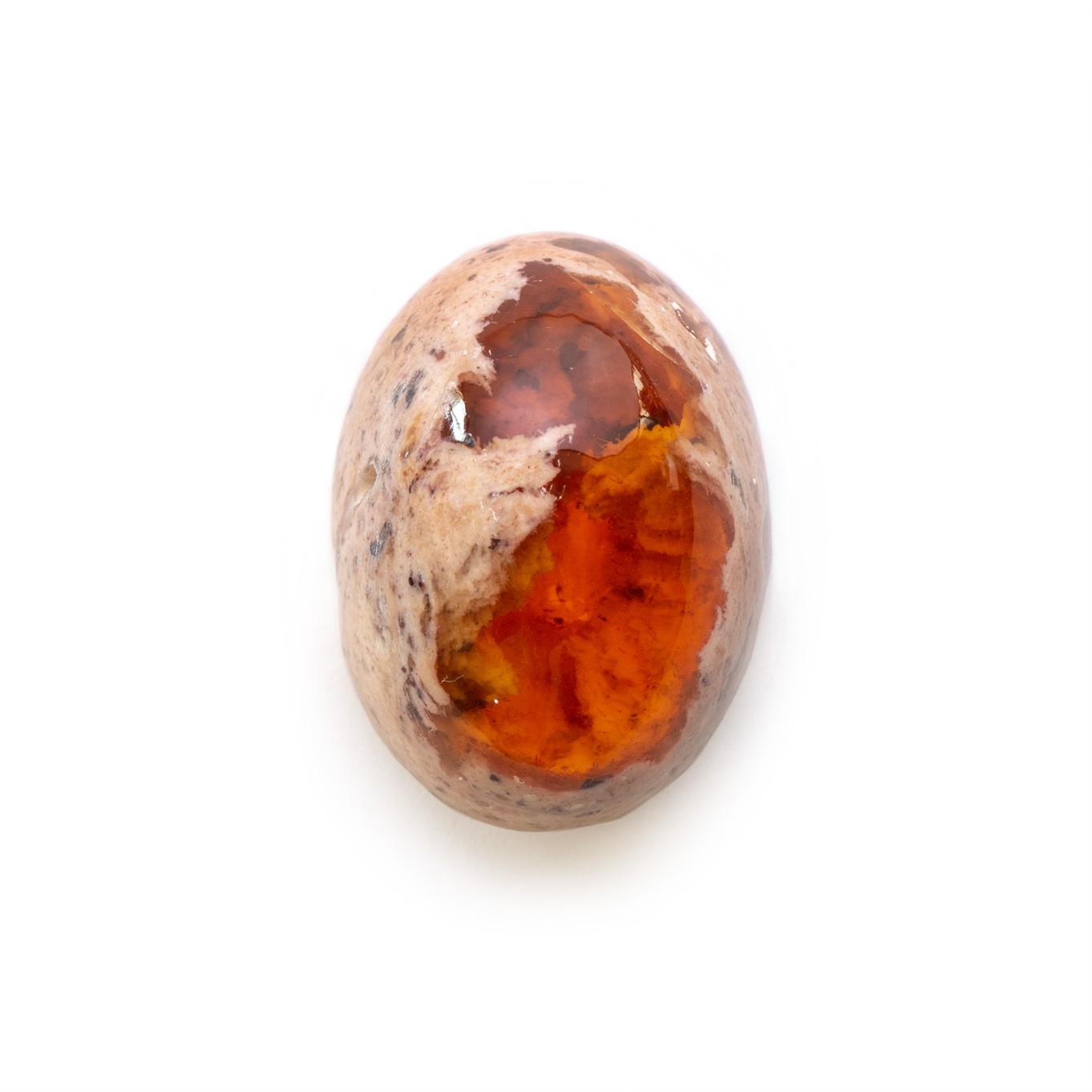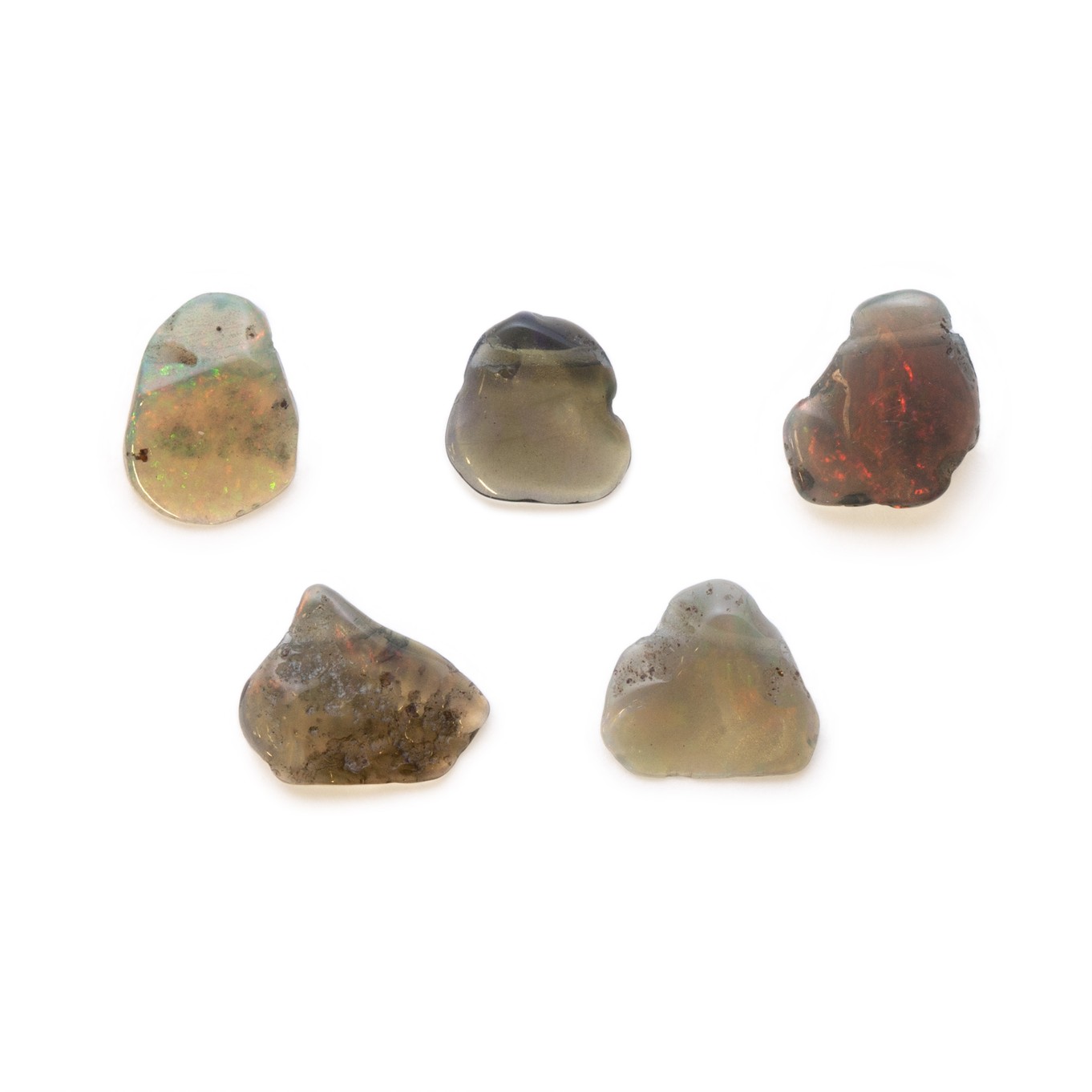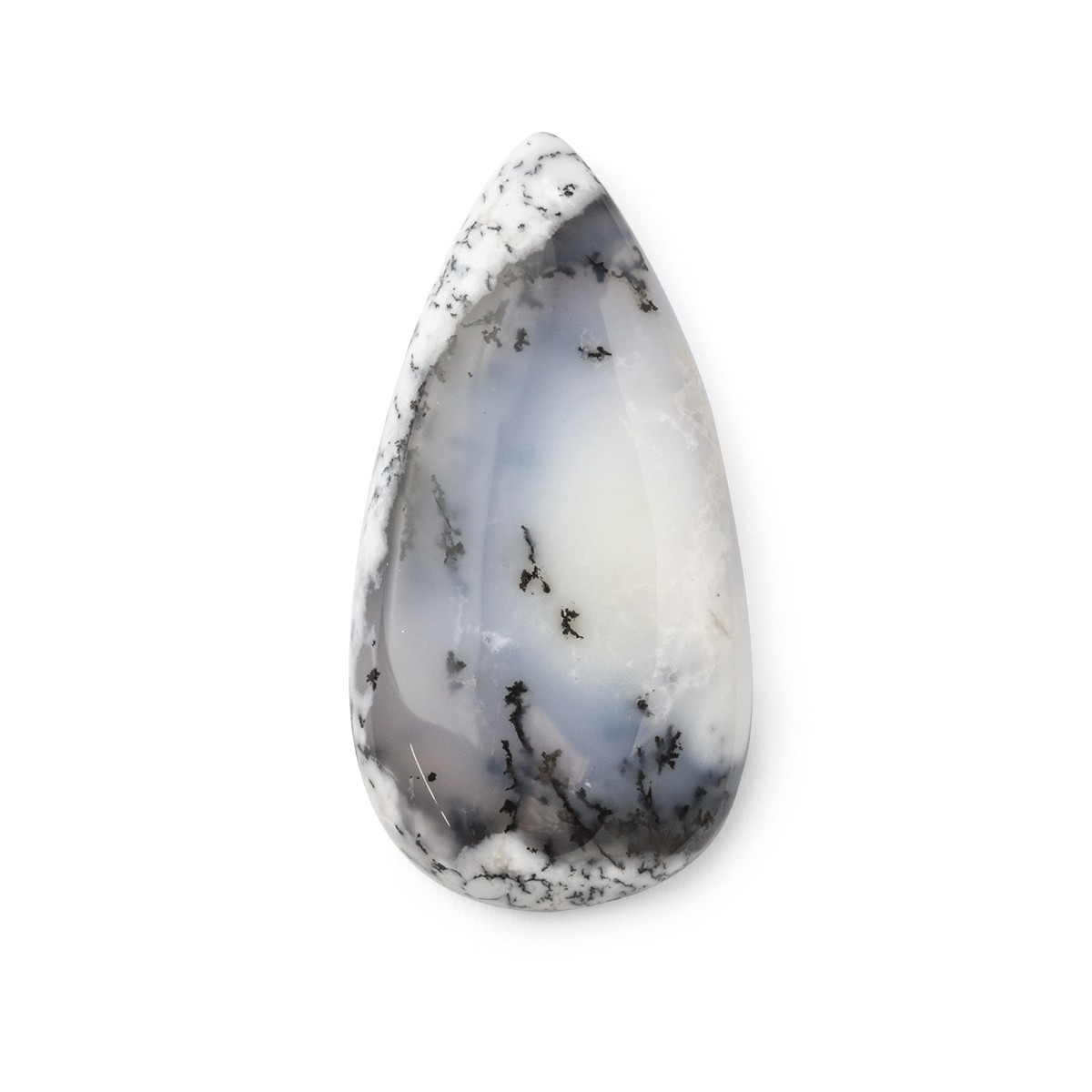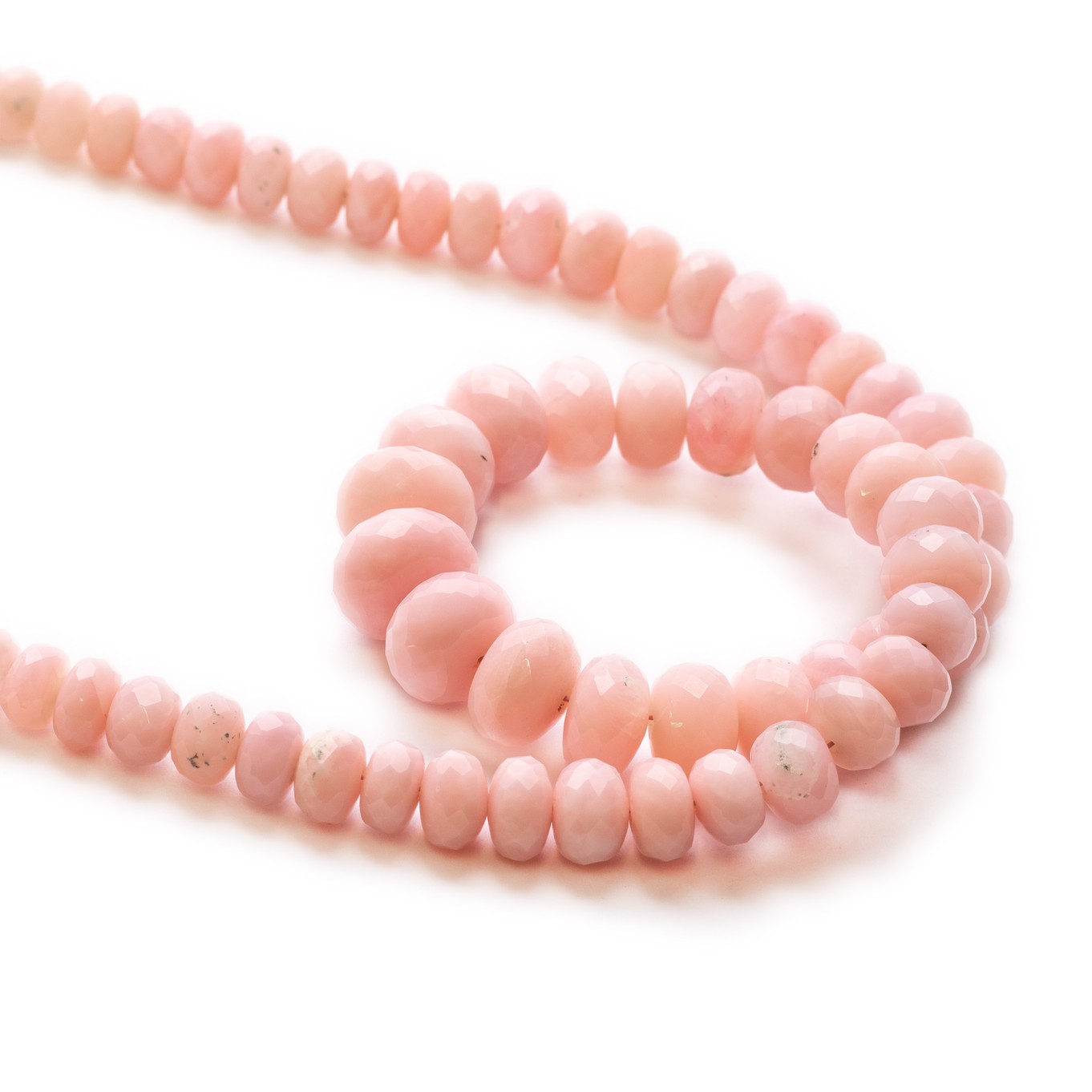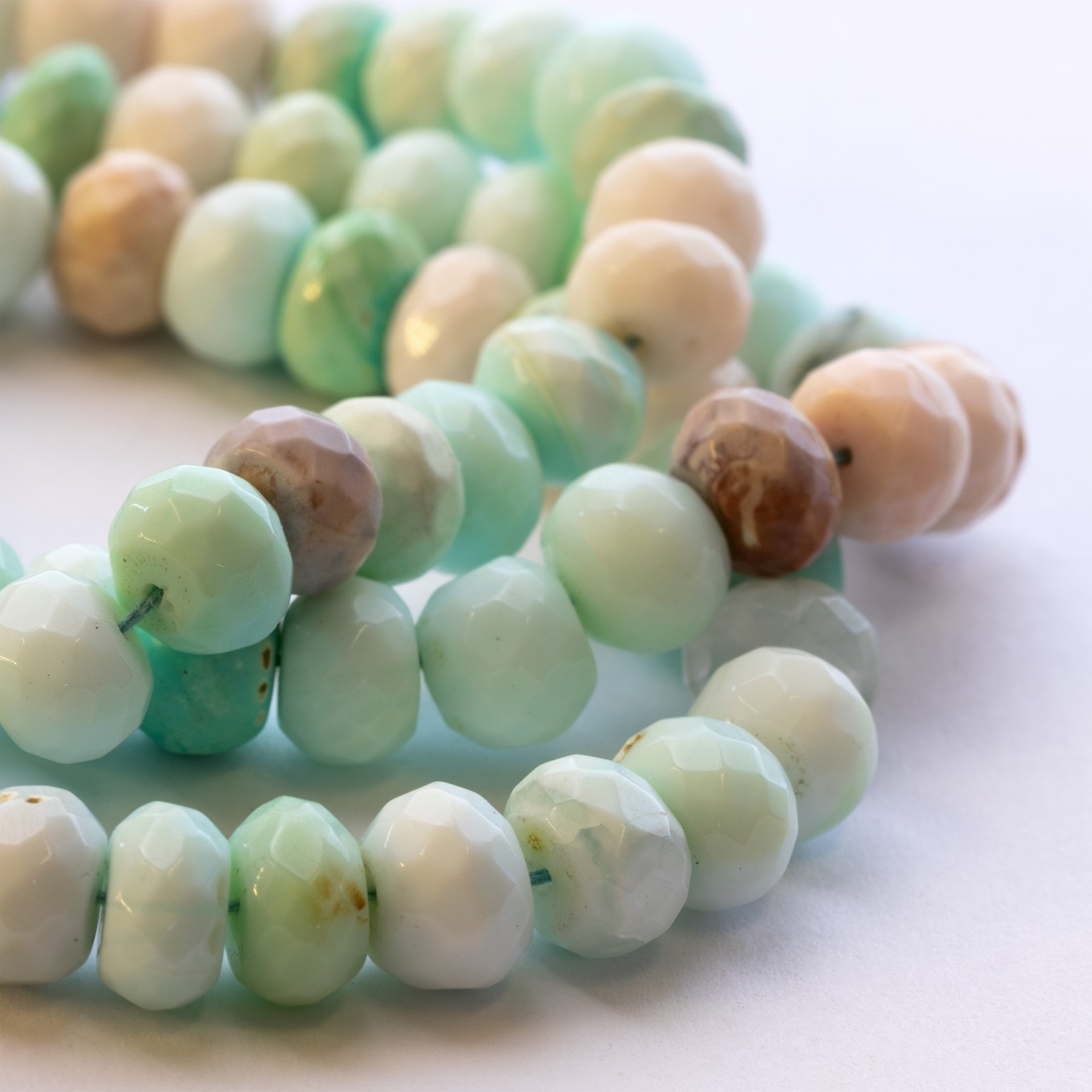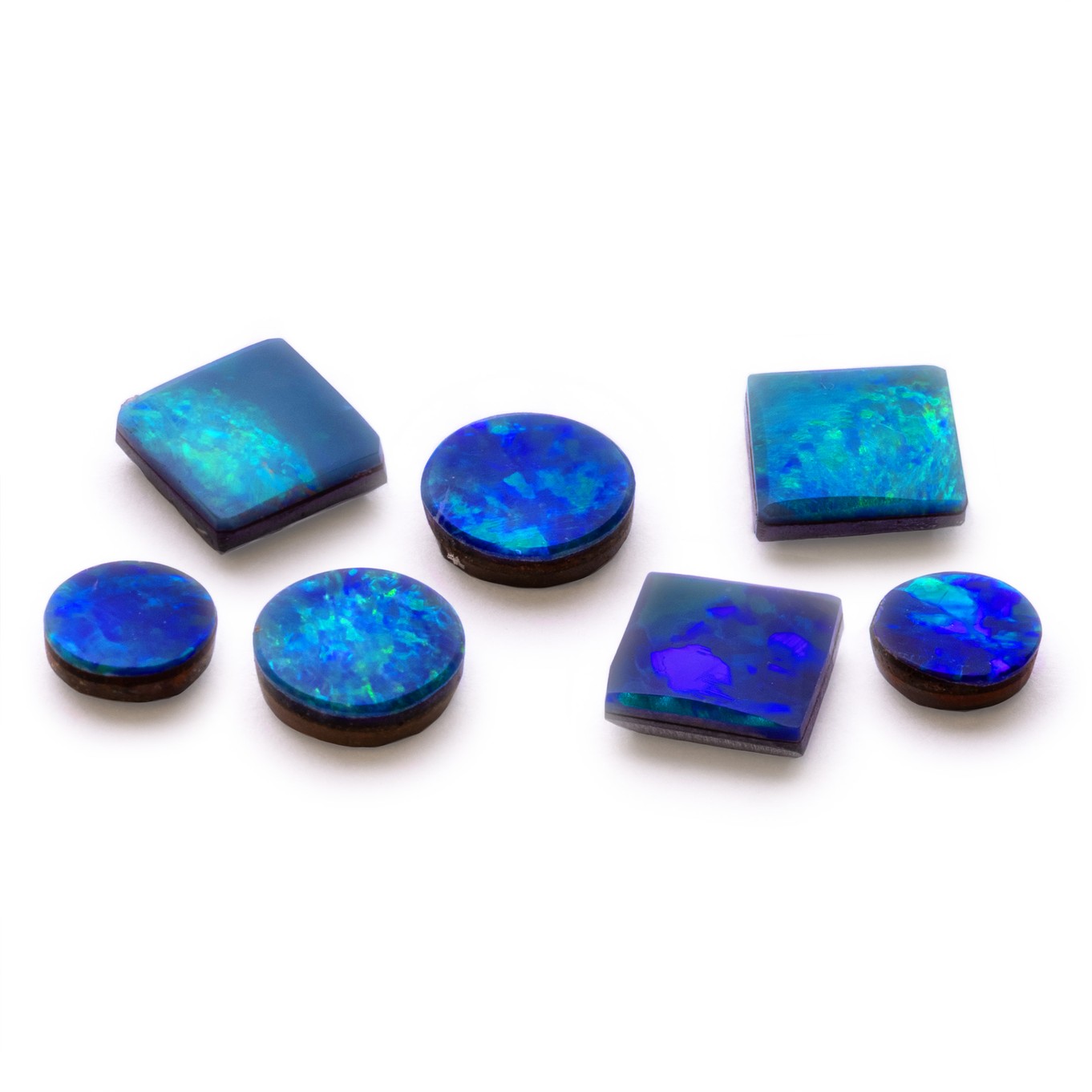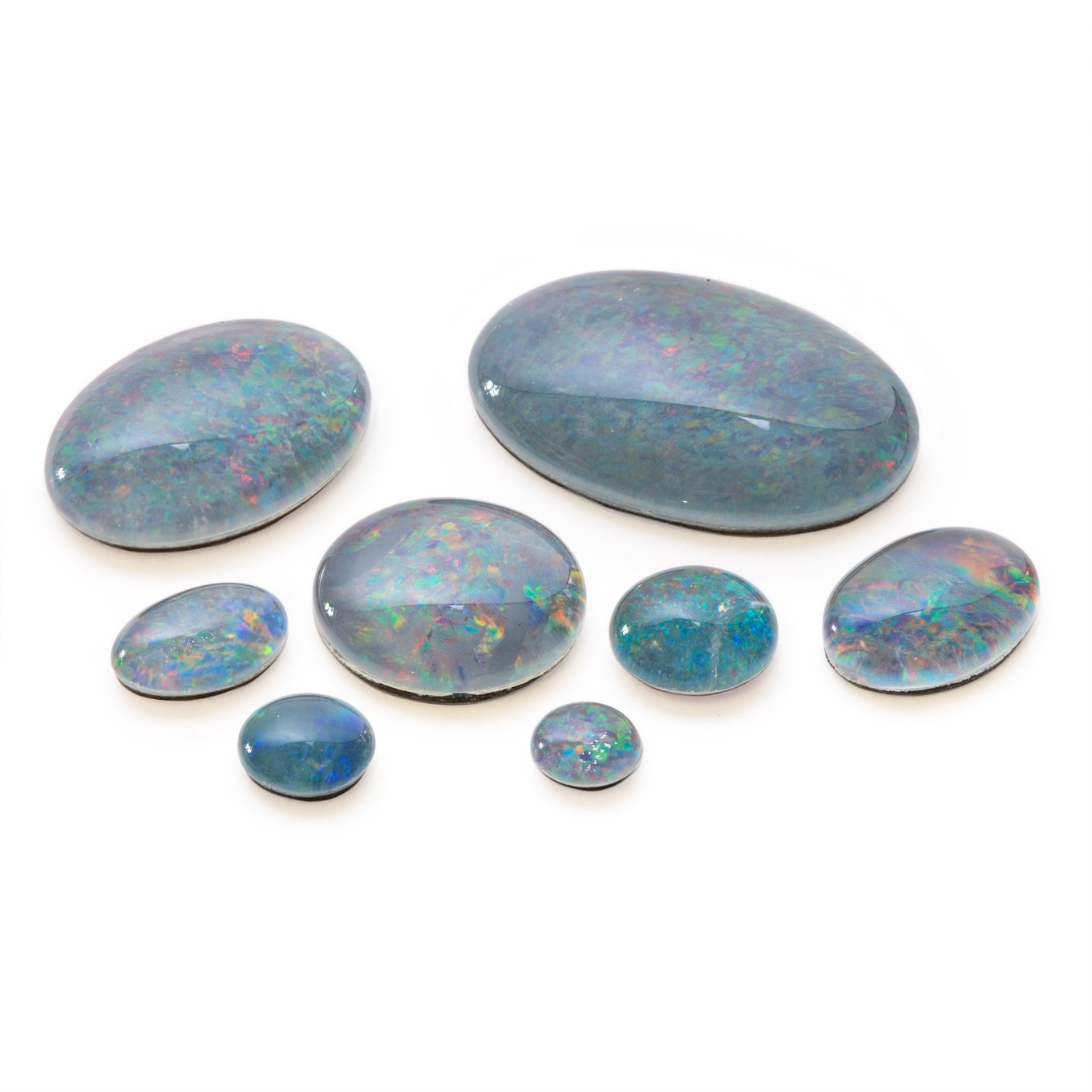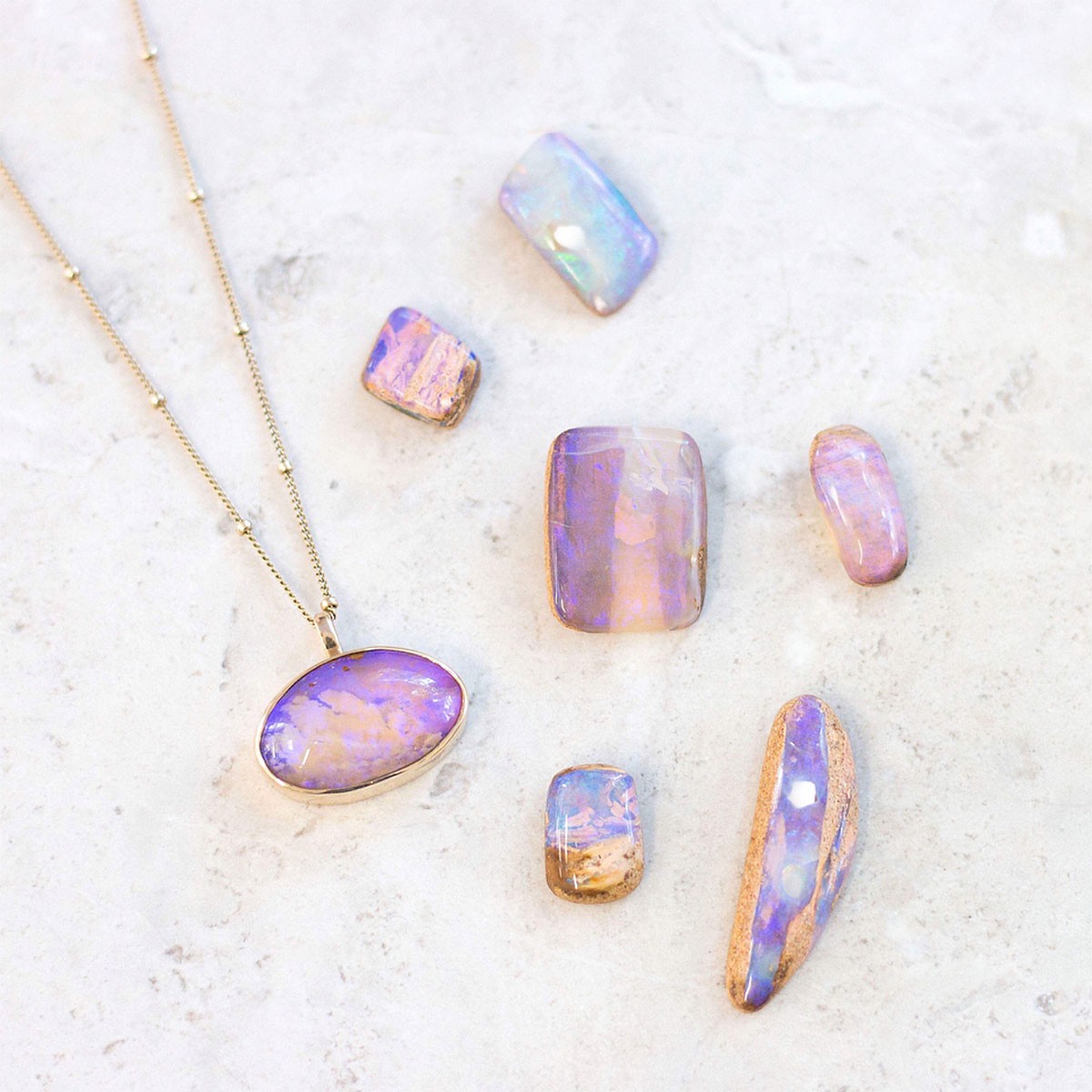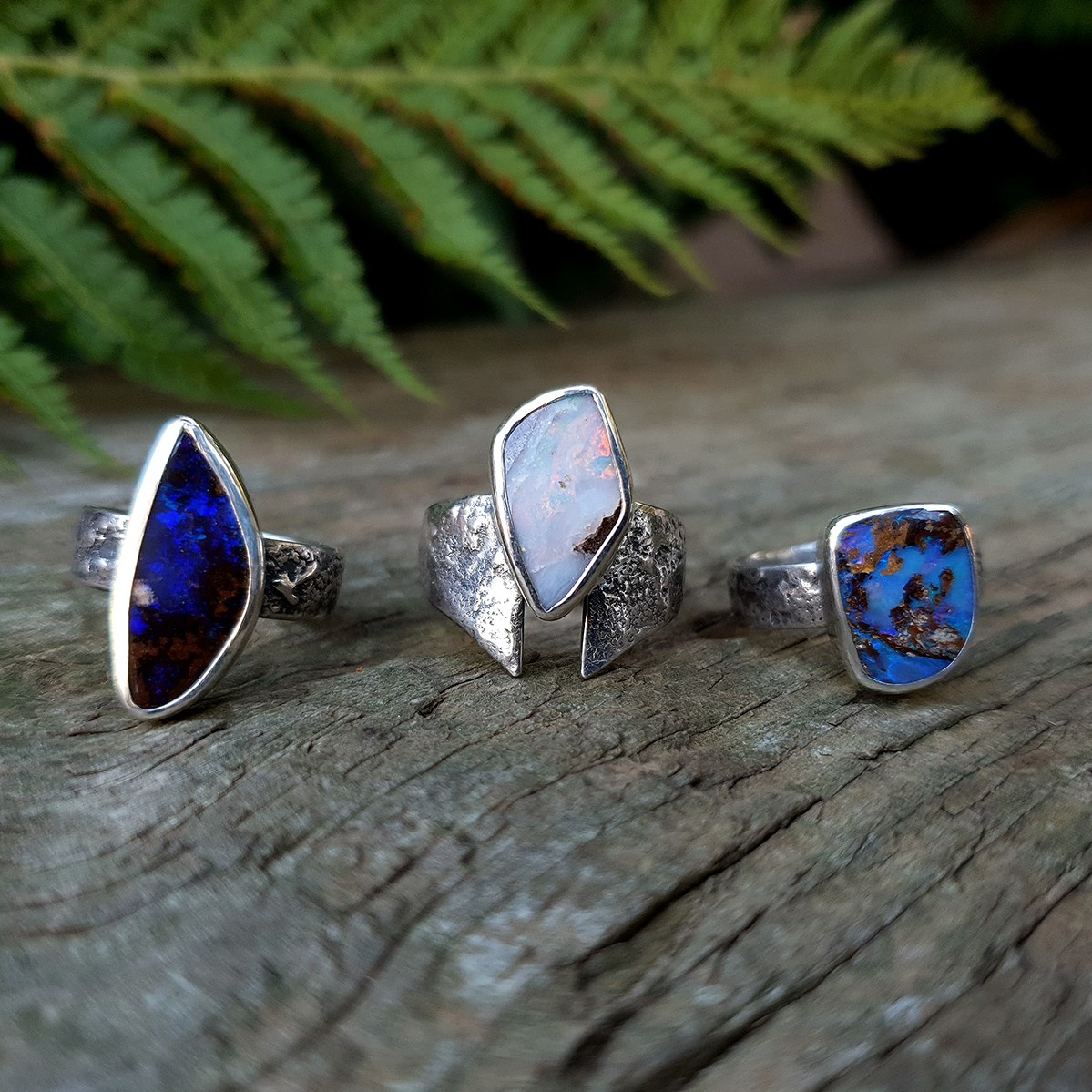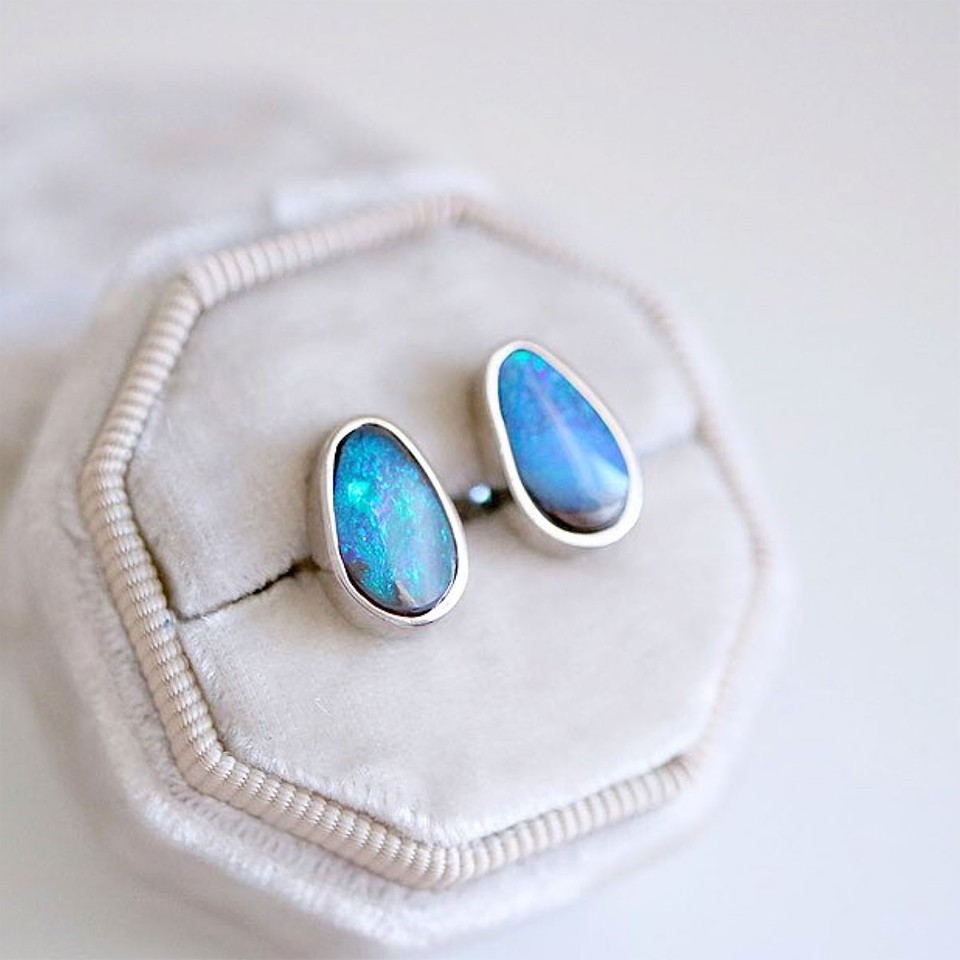Opal: The October Birthstone
One of our favourite stones at Kernowcraft is opal, there are so many different varieties and the incredible colour play in these wonderful stones makes each one so unique. Our passion for these stones is clear when you browse through our rather large collection of these stones!
There is something about an opal that leaves you staring. It is one of those stones that remind you how amazing it is that precious and semi-precious gemstones are created by the natural elements of the earth. Sourcing amazing, high quality opals from all over the world is something we are quite fond of doing and we have to say, with nearly 50 years experience in the bag, we've got pretty good at it! With so much experience we have collated a lot of information and resources all about this beautiful stone.
Opal is the October birthstone and in this blog post we delve into everything opal, from properties and meta-physical properties to history and formation, explore the varieties available plus lots of jewellery making inspiration to inspire your handmade creations.
What Is An Opal?
Opal is a form of silica, chemically similar to quartz but containing water within the mineral structure.
Precious opal generally contains between 6 – 10% water and consists of microscopic silica spheres arranged in a regular pattern. It’s these silica spheres that determine the colour of the opal - large spheres create reds and small spheres go through the spectrum of colours with the smallest creating blues.
Australia produces over 90% of the world’s precious opal with some of the most famous mining areas including Coober Pedy, Lightning Ridge, Yowah, Quilpie and Koroit. Other countries such as the US, Mexico, Ethiopia and Peru (amongst others) produce precious opal and fancy varieties of common opal.
Opal Facts
Colour: Opal comes in an array of colours from white, grey, blue, green and pinky orange - depending on its 'group'.
Appearance: Transparent and opaque.
Rarity: So far opal is easily obtained, however, there are certain variants that are rare and whilst there is no standardised or set method for valuing opals (as each one is so unique), there are a number of elements that make a boulder opal higher quality than others for example, the play of colour, brilliance and pattern.
Mohs Scale Hardness: 5 - 6
Sourced: Australia, Mexico, Peru, United States and South America.
Healing: Opal is thought to strengthen memory and therefore help treat Parkinson's disease. It is also thought to fight infections and fevers as well as purify the blood and kidneys as well as help to regulate insulin, ease childbirth and alleviate PMS.
Formation and History: Opal falls under two main varieties: precious opal or the 'opalescent opal' and the common (potch) opal. Their physical properties vary considerably and there are many varieties of each type.
There are two groups of precious opals - those with a white or light basic colour, known as white or milky opals, and the rarer black opals - these are dark grey, dark blue or grey black - deep black is considered rare.
Precious opal displays beautiful flashes of colour, whereas common or potch opal displays no iridescent colour and is often opaque (however it can still be very attractive).
In ancient Rome, opal symbolised love and hope. The Romans gave it the name opalus, meaning “precious stone.” Opal has been a popular, symbolic stone for many centuries. Arabic legends say it falls from the heavens in flashes of lightning.
The ancient Greeks believed opals were a gift of prophecy protected against disease. Europeans have long believed the gem is a symbol of hope, purity, and truth.
Meta-Physical Properties: The opal is known to stimulate originality and dynamic creativity, as well as aid in accessing and expressing one's true self. The Crystal Bible (by Judy Hall) explains that the opal is absorbent and reflective - picking up thoughts and feelings, amplifying them and returning them to the source - teaching us that what you put out comes back. Opal amplifies traits and brings characteristics to the surface for transformation. Enhancing self worth and helping you to understand your full potential.
Opal is believed to encourage spontaneity and it is said that the gemstone is associated with love and passion, helping you to release your inhibitions.
Learn more about Opals
How To Identify Synthetic & Imitation Opals
Synthetic opals (such as Gilson Opals) are made from the same chemical composition as natural opals (hydrated silicon dioxide), so they have a similar structure to that of a precious opal, but they are produced in a laboratory.
Synthetic stones can look like genuine opal, but often show brighter colours with colour patches being much larger than those found in natural opal. The colour grain boundaries are generally highly irregular in synthetic opal and within each colour grain there are numerous sub-grains producing a distinctive snakeskin pattern.
They also generally show a more ordered array of colours since artificial material doesn’t duplicate the intricate pattern of natural opal.
Imitation opal is a non-opaline material (so not the same chemical composition as natural opal) often set in clear plastic or epoxy resin. These are much easier to distinguish from natural opal as they usually have a pearly opalescence rather than a play of colour, with opalite probably being the best know imitation opal.
Opalite: There are two very different stones on the market called opalite. The lesser known is a variety of common opal which contains moss like inclusions, whereas the other (and the far better known) is a man-made product made of glass which is often miss-sold as opal or even moonstone. We have seen opalite being miss-sold as a genuine gemstone far too often, and sometimes where the seller is genuinely unaware that they are incorrect (perhaps where they themselves bought it as a 'genuine gemstone') so please beware and always buy from a trusted supplier.
Opal Myths: Are Opals Really Bad Luck?
Opals were once believed to be bad luck (some people still believe this to be the case!), but you can date this rumour back to a number of possible causes.
One, is that Sir Walter Scott published a novel in the mid 1800’s called Anne of Geierstein, where he used an opal to reflect the changing fortunes of the heroine. Book critics thought that the opal had an evil influence due to some of the heroine’s misfortunes (although this was never the intention of the author) – a myth that dramatically reduced the value of opal at the time!
It is also said that the rumour of opals being bad luck was started by diamond merchants in the mid 19th and early 20th centuries once they realised that opal was a serious threat to the diamond trade. Opal was being commercially mined and was increasing in popularity, however, the ‘bad luck’ myth soon damaged the reputation of opal.
Another myth is that opal is a fragile gemstone and so it’s bad luck to wear. At 5.5 – 6 on the Mohs Scale it is a similar hardness to turquoise, lapis lazuli and labradorite and is harder than malachite and fluorite. So yes, we wouldn’t recommend wearing an opal when gardening, playing sports or similar, but they’re actually not as fragile as some people believe.
Remember that in Australia they say the only bad luck about opal is not owning one!
Explore Different Types of Opal
Opal is a specialty in its own right; there are many different varieties of contrasting values.
Opal falls under two main varieties: precious opal or the 'opalescent opal' and the common (potch) opal. Their physical properties vary considerably and there are many varieties of each type. There are also a variety of opal options that have been put together by different man-made processes. Take a look at the main types of opals below.
Ethiopian Opal
Ethiopian opal first came on to the market in 1993, although there are records of it being used by early cavemen in Kenya. It was rediscovered in the early 90s in the Shewa Province of Ethiopia. A new deposit near the Wollo Province was later discovered in 2008 and has been producing opals of a higher quality. Ethiopian opal comes in a variety of colours, from white, yellow and orange to dark red and chocolate brown, which varies between translucent and opaque. The play of colour is the same as other opals, coming in every colour of the spectrum.
Ethiopian opal is hydrophane opal, the term comes from the Greek words meaning 'water loving' as the stone is porous and will absorb water which can change the stone from opaque or semi-translucent to transparent - this can sometimes highlight the colour play or if it becomes completely transparent no colour play will show at all. This behaviour is typical of the stone and you may notice the stone looks different in different weather, depending if the atmosphere is very damp or dry.
The good news is that tests by GIA and others have shown that opal from the Welo province in Ethiopia will revert back to its original state, once dried, with no adverse reaction such as cracking. It is part of the stones nature to change in appearance and absorb water but you may wish to take precautions to keep your Ethiopian opal jewellery out of water when washing or doing household chores to help to prevent changes to the stone or it absorbing perfume, cream, soap or cleaning products which could stain or change their colour.
Boulder Opal
The term ‘boulder opal’ covers three sub categories of opal that are all formed in sandstone and ironstone: The most common is Boulder Matrix, which comes from the fields of Yowah and Koroit in the South West of the state where beautiful ‘pictures’ are created between the matrix (the host rock) and the opal that entwines around it creating little works of art.
Then there is what is termed as Boulder Opal, which comes from a seam of coloured opal in the rock which is cut and polished to reveal opal with colours that flash and move together in one band of colour or colours
The rarest of all three is Opalised Wood (this is the cutter's favourite type of boulder opal). This forms in roots of wood where the matter decomposes leaving gaps where the opal, a combination of silica and water, trickles into it. Over a process that takes millions of years, unique patterns are formed between the opal and the fossilised wood.
Boulder opals are a very popular variety of opal and one of our favourites among our customers! We are lucky enough to personally know our boulder opal suppliers - a husband and wife team who mine and cut the opals themselves in Australia and come over to the UK to show jewellery designers and opal collectors.
Ona previous visit they showed us an example of an opal in its rock form! Boulder opals are mined from large ironstone boulders under the ground. Thin veins of colourful opal form in the cracks. It is then carefully cut, shaped and polished. They are valued by their colour, the number of colours, size and coverage of flash (the play of colour, sparkle within the stone).
Solid White Opal
Solid opal is exactly that; it consists entirely of opal material without any other host rock and can be a combination of both precious opal and common opal. White opal is the most commonly available type of opal and is therefore less valuable than boulder opal or black opal. However, it is still extremely beautiful and can exhibit all the colours in the spectrum with some stones fetching over £100 per carat.
Fire Opal
Fire opal is translucent and ranges in colour from bright red, orange, yellow to transparent. As it has no play of colour it is technically a common opal, however, with its strong colours it can be a stunning and valuable variety of opal.
Black Opal
Black opal is predominantly mined at Lightning Ridge in New South Wales, Australia, which is world-famous for its black opals. More has been mined there than at any other location in the world.
The name black opal refers to the distinctive black ‘background colour’ or ‘body tone’ and not the play of colour present in the opal. Black opal often has a natural layer of potch left on the back of the stone which can give the stone extra darkness and therefore a more vibrant play of colour - this gives them their higher value. Because of their vibrancy of colour, black opal is more valuable than clear opal or white opal.
Semi-black opals are also known as dark opal or grey opal and cover any opal which is too dark to be classed as a white opal, but aren’t dark enough to be a black opal, these mostly come from Lightning Ridge.
Dendrite Opal
Dendrite opals have no fire but the milky white material is punctuated by delicate natural fern/tree-like black and grey markings of manganese oxides.
The stones are often reminiscent of a wintry forest. The complex patterns in contrasting black and white are quite amazing and each very unique in their patterns.
Pink Opals
Pink opals are one of the rarer colours of the opal and range in hues from blush pink to bubblegum pink, with the Peruvian pink opal being the most saturated pink opal. It's a natural type of common opal, usually containing palygorskite and chalcedony.
If you're after a birthstone gift, why not opt for pretty pink as a sweet alternative. Pink opal jewellery has also been used in history for romantic relationships, representing love, protection and healing.
Peruvian Opal
Peruvian blue opal is relatively rare and is only found in the Andes mountains near San Patricio, Peru. It is the national stone of Peru.
Peruvian opal is a translucent stone with colour similar to the beautiful tropical Caribbean Sea. Depending on how the stone is cut it can be clear, scenic (showing varying degrees of colour) or dendritic which has black fern like inclusions.
Unfortunately, in recent years dyed stones have been sold by dealers as Peruvian blue opal. Dyed stones are quite common and sell very cheaply at gem shows and on internet auctions. You can sometimes tell if a stone is dyed if the blue colour is uneven.
Opal Doublets
Opal doublets consist of a very thin slice of precious opal that has been cemented on top of either common (potch) opal or another host rock. As some opal has very thin but brilliant layers of fire, this can give doublets extremely beautiful colour.
Due to the nature of the doublets, care must be taken when setting them as the edges can be vulnerable to chipping and you should avoid prolonged exposure to water as this will eventually cause ‘lifting’ between the layers.
Opal Triplets
Opal triplets are similar to opal doublets, as they are made up of layers. As the name suggests they have three layers, a black stone backing, a slice of opal in the middle and a domed piece of crystal quartz or glass on the top. Our opal triplets are capped with natural quartz (making them more hard-wearing than opal doublets) and much better quality than those capped with glass that can be prone to chipping. You should avoid prolonged exposure to water as this can eventually cause ‘lifting’ between the layers.
Opal Jewellery Designs
Opals are a very popular gemstone for jewellery, they add a real talking point and with such a variety to choose from there are so many design possibilities. Check out some incredible opal jewellery below, including beginner friendly designs.
Check out our jewellery making kits section aimed at beginners, where you'll find basic jewellery techniques using jewellery settings and wire wrapping techniques to create your own opal birthstone jewellery designs. Each kit comes with online step by step instructions and a handy one click shopping list, so you can easily customise the designs with your favourite gemstones and supplies.
We've used our flat plate earstud settings to glue on these wonderful opal nuggets for a lovely set of earrings.
This is one mesmerising chunky trio of boulder opal rings by Made By Oonagh!
How sweet are these boulder opal earstuds by Marta Oms? These were made for a Birthday present and we're sure they were wonderfully received!
Caring for Opals
Care When Setting Opals
Opals are quite delicate stones so having a good understanding of the type of opal you would like to set is important. You will need to take into consideration its cut and shape and the type of setting it is most suited to for ensuring the best result.
Opal doublets for instance can be particularly delicate as the layer of opal is quite thin and doesn't have a protective quartz layer like an opal triplet.
Boulder opals come in a wide variety of types as well as shapes and sizes. A long, thin stone for instance will be more vulnerable than a smaller, rounded and deeper stone. Care should be taken to ensure that the back of the stone is stable and the setting will support it evenly when you come to set the stone.
One useful tip, particularly for long, narrow, thin stones is to use some Devcon 5 Minute Epoxy Glue under the stone to fill any gaps and create a stable base in the setting.
Taking into consideration the type of jewellery and the setting style, a bezel setting for instance will provide more protection to the edge of the stone, particularly in a ring setting where it could be more vulnerable.
How To Care For Opal Jewellery
As opals are one of the more delicate stones they do require some care and understanding of the nature of the particular stone. There are a few reasons that make opals quite delicate, firstly, they are relatively soft gemstones (between 5.5 and 6.5 on the mohs hardness scale), they contain water so can be susceptible to cracking if they dry out too much in a very low humidity atmosphere.
Hydrophane opal such as Ethiopian opal can also change in appearance and lose its fire if it absorbs too much water (though if dried out it should return to normal).
Opal triplets and doublets are made from layers of stone glued together so repeated contact with water can weaken the glue or cause water to seep between the layers and cause a cloudy appearance.
Don't put opals in an ultrasonic cleaner and avoid contact with things like bleach, chemicals and cleaners.
References: The Crystal Bible by Judy Hall
Also in this section:
- What is Amethyst Trapiche?
- The Chakras & Stones For Beginners
- Rare Ammolite For Jewellery Making
- 5 Gemstones To Honour Your Mum
- Top Gemstones For Love & Valentine's Day
- 5 Gemstones To Wear On Your Travels
- Mohs Hardness Scale, Gemstone Durability & Jewellery Making
- Top 10 Affordable Gemstones For Jewellery Making
- Your Guide To Anniversary Gemstones & Jewellery Making
- Your Guide To Birthstones & Birthstone Jewellery
- Discover Rare Cornish Turquoise
- Garnet: The January Birthstone
- Amethyst: The February Birthstone
- Aquamarine: The March Birthstone
- Diamond: The April Birthstone
- Emerald: The May Birthstone
- Pearl: The June Birthstone
- Ruby: The July Birthstone
- Peridot: The August Birthstone
- Sapphire: The September Birthstone
- Opal: The October Birthstone
- Topaz: The November Birthstone
- Turquoise: The December Birthstone
- Types Of Diamonds For Jewellery Making
- Lapis Lazuli, The Stone For Truth & Communication
- Types Of Agate Stones For Jewellery Making
- What Are Precious & Semi-Precious Stones?
- Watermelon Tourmaline For Jewellery Making
- 6 Stones For Alternative Engagement Rings
- Rare Tanzanite For Jewellery Making
- Gemstones For Your Inner Mermaid
- 5 Spiritual Gemstones To Help Your Mind & Body
- Rose Quartz, The Love Stone
- What Are Drusy Gemstones?
- What Is A Boulder Opal & How Do We Source Them
- All About Our Natural Untreated Turquoise


